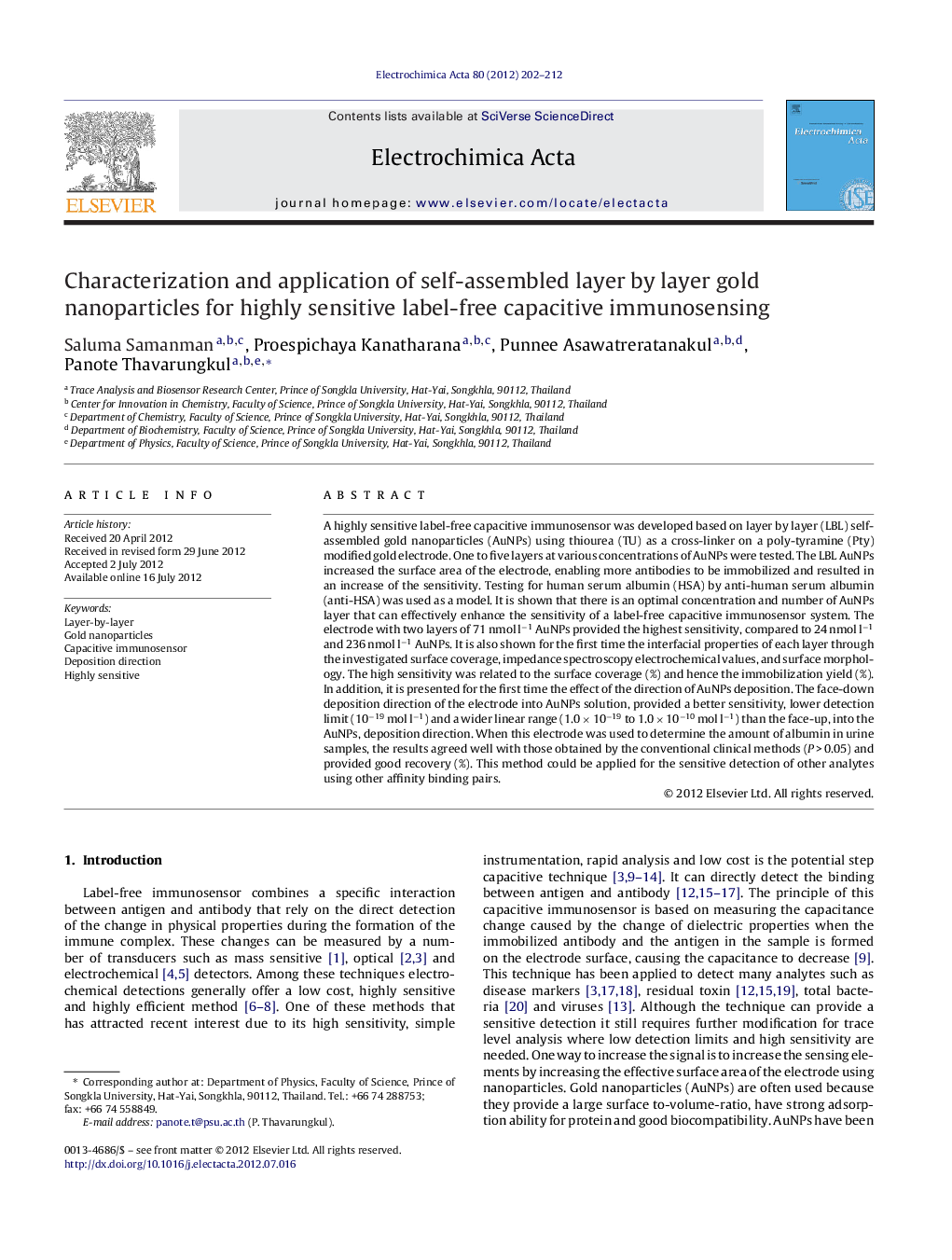| Article ID | Journal | Published Year | Pages | File Type |
|---|---|---|---|---|
| 187890 | Electrochimica Acta | 2012 | 11 Pages |
A highly sensitive label-free capacitive immunosensor was developed based on layer by layer (LBL) self-assembled gold nanoparticles (AuNPs) using thiourea (TU) as a cross-linker on a poly-tyramine (Pty) modified gold electrode. One to five layers at various concentrations of AuNPs were tested. The LBL AuNPs increased the surface area of the electrode, enabling more antibodies to be immobilized and resulted in an increase of the sensitivity. Testing for human serum albumin (HSA) by anti-human serum albumin (anti-HSA) was used as a model. It is shown that there is an optimal concentration and number of AuNPs layer that can effectively enhance the sensitivity of a label-free capacitive immunosensor system. The electrode with two layers of 71 nmol l−1 AuNPs provided the highest sensitivity, compared to 24 nmol l−1 and 236 nmol l−1 AuNPs. It is also shown for the first time the interfacial properties of each layer through the investigated surface coverage, impedance spectroscopy electrochemical values, and surface morphology. The high sensitivity was related to the surface coverage (%) and hence the immobilization yield (%). In addition, it is presented for the first time the effect of the direction of AuNPs deposition. The face-down deposition direction of the electrode into AuNPs solution, provided a better sensitivity, lower detection limit (10−19 mol l−1) and a wider linear range (1.0 × 10−19 to 1.0 × 10−10 mol l−1) than the face-up, into the AuNPs, deposition direction. When this electrode was used to determine the amount of albumin in urine samples, the results agreed well with those obtained by the conventional clinical methods (P > 0.05) and provided good recovery (%). This method could be applied for the sensitive detection of other analytes using other affinity binding pairs.
► Label-free capacitive detection at ultra-trace level was obtained via layer by layer technique. ► There is an optimal concentration and number layers of AuNPs that gave the highest sensitivity. ► The electrode with two layers of 71 nmol l−1 AuNPs provided the highest sensitivity. ► The face-down deposition direction of the electrode gave a better performance than the face-up. ► Capacitive detection of urine and serum albumin agreed well with the hospital assay (P > 0.05).
